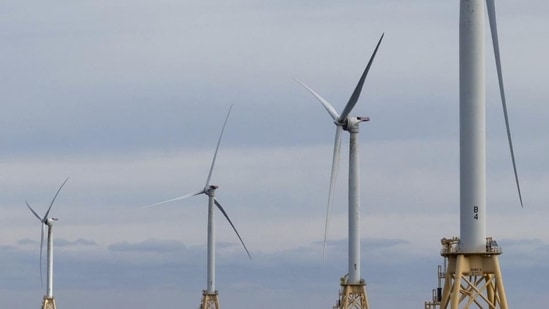Budget 2024-25: India's energy transition plan
This article is authored by Anu Anna Jo, senior associate and Aamina Ibrahim, research intern, CPPR.
India, targeting a $7 trillion economy and decarbonisation target by achieving 500 GW of fossil-fuel free generating capacity by 2030, needs a well-rounded strategy that harmonises economic development with environmental sustainability. To reach India’s goal of achieving 50 percent of its total installed power generation capacity come from non-fossil fuel sources by 2030, India must install approximately 50 gigawatts (GW) of renewable energy capacity annually for the next five years, starting in 2024. Currently, India has only been able to add around 15 GW per year. The union budget 2024-25 identified energy as a priority sector, with an overall allocation of an estimated ₹68,769 crores, a significant decrease from the previous year's allocation of ₹94,915 crores. The budget emphasises the development of new strategies for strengthening the transition to renewable energy sources and promoting energy security in terms of “accessibility, affordability, and availability.”

The Union budget has announced several initiatives including pumped storage, nuclear and thermal plants. The growth of nuclear energy in the form of small modular reactors has been emphasised, with the government planning to make it a significant portion of the energy mix for Viksit Bharat. To facilitate this, the government plans to partner with the private sector to set up Bharat Small Reactors and aims to enhance the research and development of Bharat Small Modular Reactors and newer nuclear technologies.
Although small modular reactors represent an opportunity for India to augment its energy capacity, its development along the lines of accessibility, affordability and availability could pose challenges in future, raising questions about the feasibility of the initiative. Estimates by Now Solar, an India focused renewable energy advisory and management organisation, indicate that small modular nuclear reactors are expected to be the most costly source of power and are unlikely to be available before 2030. Although a bold initiative aimed at expanding the nuclear energy component in the energy mix of India, questions regarding its economic viability remain unanswered. Over the years, nuclear policies have predominantly centred on large nuclear reactors, with no initiatives in place to foster demand and create a level playing field for new market entrants. Additionally, some nuclear reactors are under International Atomic Energy Agency Safeguards due to their use of imported uranium. Without policies to stimulate market demand, this initiative risks becoming another failure. Programmes and schemes aimed at gradually phasing out fossil fuels such as harnessing of wind energy and integration of compressed biogas into the natural gas failed to receive a mention in the budget speech. The focus on nuclear energy also raises questions on the potential sidelining of such projects in the future.
The interim budget included numerous announcements to promote green growth, with rooftop solarisation receiving a modest mention. In line with the interim budget announcement, the Pradhan Mantri Surya Ghar Muft Bijli Yojana was launched to install rooftop solar plants in 1 crore households, providing up to 300 units of free electricity per month. This scheme has seen significant interest, with over 1.28 crore registrations and 14 lakh applications, as disclosed by the finance minister in the recent budget speech. The applications received account for only about 11% of total registrations, largely because the final approval for installing solar rooftops lies with the respective state electricity boards. The capacity of solar plants depends on the transformer capacity of the area, making it challenging for state electricity boards to approve the applications. The state electricity boards, with their existing grid capacity, will not be able to approve the installations until there is an upgrade in the grid infrastructure.
The celebrated FAME Scheme, which has significantly multiplied electric vehicle (EV) registrations in the country to over 13 lakhs, is seeing a reduction in budget allocation. According to the budget estimates, the allocation for the upcoming fiscal year is 2,671 crores, as against 5,171 crores in the previous financial year. However, players can breathe a sigh of relief with the exemption of customs duties on lithium and cobalt, the two main components for lithium-ion batteries. This could pave the way for localised manufacturing of batteries for electric vehicles, significantly reducing production costs and eventually making the process more cost-effective. While the boost for incentives for electric vehicles is beneficial in cutting down the tail-end emissions, there is a downside. With the increasing private vehicular population, governments often overlook the importance of public transport, particularly the rollout of electric buses. The allocations for electric buses in the union budget remained the same as those in the interim budget. To reduce overall private vehicle congestion and address vehicular pollution, there should be more focus on promoting electric buses compared to private electric vehicles. Increasing the number of buses and reducing private vehicle use can lead to a reduction in overall emissions.
Overall, while promoting economic growth along with a phased transition to renewable energy sources, presents opportunities for making India a hub of energy security by 2030, a much-anticipated year in the discourse of global sustainable development. However, the budget seems to fall short in providing clear insights into the prolonged advancement of the anticipated schemes. There is uncertainty whether these schemes will achieve their intended long-term goals due to the absence of continued and sustainable allocations in the budget. The prospect of nuclear energy gaining a focal point over the other established sources of renewable energy, despite concerns about its cost, availability and safety exemplifies the same. The inconsistent allocations across different schemes create confusion, creating a disconnect between the energy aspirations and the pronounced goals. While the budget speaks of new volumes for the advancement of sustainability, the success of the various announced schemes can only be determined with time.
This article is authored by Anu Anna Jo, senior associate and Aamina Ibrahim, research intern, CPPR.





